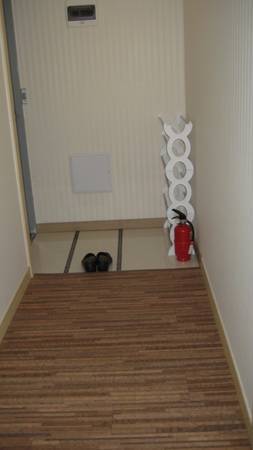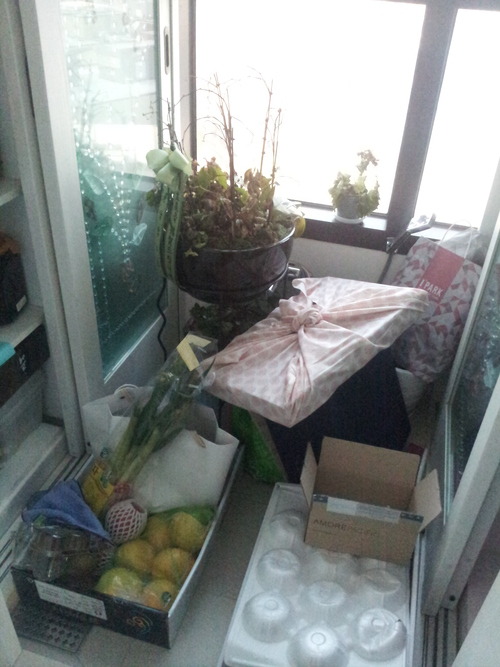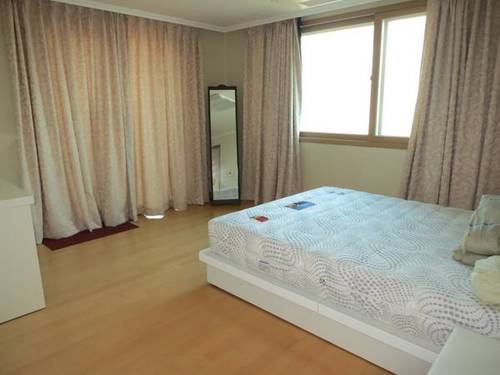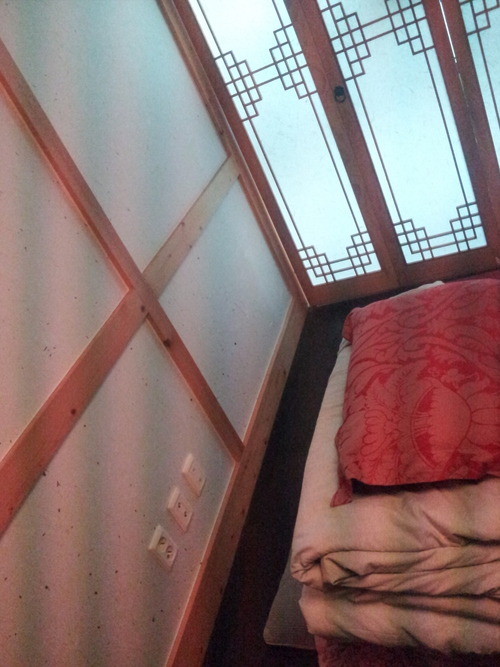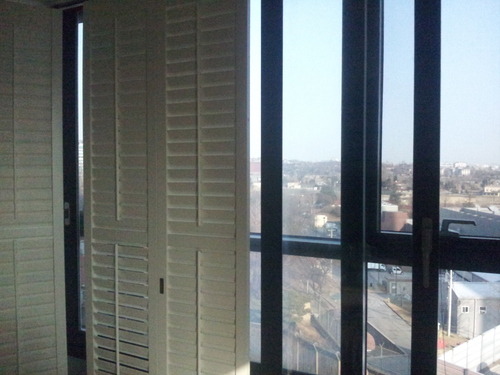http://www.youtube.com/watch?v=FqoMomj3QtE
50 Shades of Gay: Perspectives of Gay Korea
A Tale of Two Emotions
“You’ve never been to West Hollywood’s Pride, but you’re from LA?” James asked incredulously, almost as if there were no possible way. “Yeah,” I explained equally shocked, but was then quickly distracted by an incredibly sweaty and muscular duo in matching hipster summer tanks. We continued wandering in the plaza looking at the parade and trying to seek refuge from the sun. It then dawned on me; I only participated in gay events here in Korea. I’ve always been politically active, so much so that I staged a one man protest in high school. Yet, despite being so outspoken on many things, I was in the closet back in the United States. Maybe it’s because I’m older now? “What about you?” I figured that I would flip the question around. “Yeah it’s my first pride,” my friend said in between sips of now Luke-warm Cass. Possibly Korea, had something to do with wanting to become politically active or at least show solidarity in the fight towards equality.
Korea officially has no laws against homosexuality. While many Western progressives cheer at this, the reason is actually pretty hurtful. Korean culture does not believe such acts would exist on the peninsula. So the rationale is, why legislate on something that would never happen? Thus attitudes, as surmised by a Korean friend of mine, are somewhat prevalent. “Bummy, that’s way too much money to spend on your girlfriend,” I downed my drink while thinking about the staggering price he stated for a romantic getaway. “Well, how much would you pay for your girlfriend?” He stated. Fair point, I thought. “Not 900,000 won ($850) a night.” Soon a few other friends joined into the conversation. Jokes about prostitutes, nuns, and cucumbers abound. Then, as if some divine edict of comedy actually exists, the obligatory gay joke. “Okay, let’s say that a guy paid you 900,000 won ($850) instead of you paying for a room. Would you do it?” I looked at Myra and looked at Bummy. A plastic smile was hiding the intense anxiety of how he would respond to Myra’s seemingly innocuous question. “I don’t understand.” I knew what that meant; it meant that he did understand the words, but not the concept. “Would you sleep with a man for 900,000 won ($850)? Doesn’t have to be sex, but a blowjob or you know, messing around?” “Fuck no. I don’t like the gays.” The plastic smile I wore intensified into more of a Kevlar protected shield to try to cover any insecurities and insinuations about me. I expected the response ‘I’m not gay’, or ‘I’d never do that with a guy.’ However, I didn’t expect the level of vitrol that he had. I am gay. Thus, he doesn’t like me. Myra looked at me smiling awkwardly desperately wanting the conversation to go back to its debauched joviality. A few months later, as I came out to him, he made me choose between him and my boyfriend. Well, I choose the later. Thankfully, I don’t often have to make a choice between my friends or my boyfriend.
It is important to note that attitudes are changing. A recent Pew survey showed 71% of Koreans aged 18-29 believed that homosexuality is not wrong. This contrasts with 16% of Koreans 50 and up. Currently 25% of Koreans support gay marriage, while 67% of Koreans oppose it. 8% do not know
1. Obviously, the majority of my peers would be accepting and tolerant. Things are definitely changing for the better in this regard.
“I envy you!” It’s funny how often that word is used. “Why? I mean you make more than me, travel more.” Yeah, there was a twinge of jealousy in my voice as looked around the stark and utilitarian space otherwise known as my kitchen. “You and Andy have not fought” Hyung Min looked a little dejected as slumped into a worn dining room chair. We continued eating pizza and drinking beer in my humid apartment. “Of course we have. He cheated on Call of Duty once,” I said this in all seriousness, which prompted me to look around my apartment. A skateboard, PS3 and X-Box, a beer pong table. Well, you can take the man out of the fraternity, but not the fraternity out of the man. Hyung Min wryly smiled. “Amanda and I… I don’t know.” What was odd was that it was one of the few moments that I shared with a straight person talking about relationships on an equal level. Andy and I were not a sideshow, but rather people in a relationship. It transcended cultures as well as sexuality. However, unfortunately, such solidarity and support is not always found in homosexual Korea. Especially when dating.
Two Gays, Another Gay, and a Coffee Shop
It would be a lie to say that I was sober at 5am on Sunday. Well, not so much a lie as an exaggeration of the truth. Regardless, I ran into James and his friend Tom. They both stumbled out onto the street as bleary eyed as I was. “Going to the Hill?” Aw, the obligatory question of every homosexual in Seoul. “It’s 5am. I’m going home. I’ll see you at noo-make it 1pm,” I said trying to hail a taxi with little success. At this point the other group of guys that I was originally with was more enthralled at street vendors selling shawarmas than the barrage of women exiting the bars and clubs. Personally there is something a little sad when a guy, or girl, has hopes of finding another person and ends up buying a burger instead. Dejected, they entered the cab after not finding their proverbial Cinderella, if only for just one night.
In Korea dating is hard. Competition is stiff for heterosexuals who are not only expected to maintain a high beauty and income standards as well as fulfill the wishes of both significant other and their family. Currently the largest market for male cosmetics in the world is in Korea, in terms of per capita usage. Thus, men are feeling the proverbial heat just like the women. Just as important as beauty are income and societal ideals. The pressure to get married propelled Korea to have the second highest rate of marriage in the OECD
2. Mate selection, however, has driven the median age of marriage to roughly 30 years old, about 3 years older than the OECD average. Much of this is due to the high cost of living in Seoul as well as ever increasing university fees which is causing a rise in debt. The takeaway is that it’s hard and stiff in Korea for heterosexual males to get hard and stiff regularly.
It’s just as “hard” and “stiff” for homosexuals too. Legally, gay marriage is not allowed. Ceremonies are performed, but much to the ire of the general public. The first publically performed gay marriage ceremony (non-legally recognized) in 2013
3 was met with more consternation than ecstasy. In terms of dating, the level of conservatism creates a maelstrom of emotions and misunderstandings with, albeit, sometimes hilarious and awkward consequences.
“He just tongue darted in and out my mouth and squeezed my junk,” James said in between sips of his latte. I met them both promptly at 1pm in Gangnam later the same day. “I’m like does that seem like it would feel good?’” I didn’t know how to respond. Not to brag, but I feel really happy my sex life is less like the blooper reel of “Freaks and Geeks” and more like the director’s cut of “Queer as Folk”. About 10 minutes later, after eating an overpriced sandwich, I asked whether or not his parents knew that their son was having sex with James since James would stay the night. “No. I mean they thought it was normal that we took showers together, slept together. Dude, It’s Korea.” I guess in the West, the equivalent would be wrestling half naked with your bros. Nothing sexual, but genuine male bonding before marriage. What then occurs, according to Tim is that “(Gay) Koreans are quick to love.”
That was one common complaint I heard over and over. Personally, as a romantic, I find it endearing. The idea of waiting in the rain for your love, and then proposing to them in a grand gesture, appeals to me. However, hearing other perspectives of how after one or two dates, baby names and country selection debates become the topics du jour paints a picture of how juxtaposed Korean gay culture is. On the hand, it’s liberal and taboo with Homo Hill best described as a “Hot Mess” according to Tim. On the other, exhaustive and quick planning to such an extent that even the psycho girlfriend meme could not capture the awkwardness and eccentricities that exist in gay dating in Korea. Much of this does go with the cultural expectation of love and marriage. Gay males in Korea are still socialized as Korean, thus it would only seem natural that the same mate selection pressures would apply to a certain extent. However, since gay marriage is illegal, what occurs is something akin to America in the 1970s-1980s, the gay party scene, which is a stereotype rooted in some aspects of reality.
I left the sandwich shop about 20,000 won lighter and not as full as I would have liked. As my wine hangover with hitting its zenith, I decided to follow up with Su Min to see if he finished the survey.
Lovers in a Dangerous Time: Gay and Korean
I first met Su Min when I was seeing John. John is extremely attractive. He doesn’t seem to think so, but any guy with six pack abs, a strong chest, and a cute smile generally qualifies as attractive. Being new to Korea and to the gay scene, I fell for him. The problem was that Su Min, fell more for John than I had. An awkward friendship arose with the occasional sexual escapade.
Staying at Su Min’s house was initially like living in a SoHo loft with Artists coming in and out at all hours of the day and night. The stark walls and floors added to the minimalist bohemian feel. Not to sound overly cliché, or to use too many word play devices, but I did see the depths of Seoul’s soul while staying there. It was there I asked what Su Min wanted from his family. He had no plans to tell them. In fact, he considers that his greatest challenge of being gay. After 7 years of coming out only to close friends, I found it odd that he wasn’t out to his parents. I mean didn’t his parents ever wonder why a talented, attractive young singer never mentioned a girlfriend?
With that I could empathize. I accidently came out to my very Ivorian mom on April 1
st. I should qualify that the accident wasn’t coming out; it was the terrible date selection. I’m not good with time zones. I digress. Yeah, I grew up in California, but I always have a part of me that remains rooted in Africa. In some strange sense of solidarity, being gay in a conservative culture, I maintained contact even after awkward sexual encounters and bits of jealousy.
While for him the greatest challenge about being gay is adhering to what is expected of him in Korea and not telling his parents, things are changing. Another friend of mine, Don, mentioned about a high school girl that was openly gay at the place where he used to work. You could attribute it to personal strength, however, the statistics corroborate with the notion that indeed the times are a changin’.
Letters of Love and Hope: The Future and Beyond
Currently, as I’m typing, I’m staring at my own fears of moving back to the US. The air conditioning is fanning the insecurities and irrational fears I have concerning the future. Torrential downpours serve as a tangible symbol of the inner emotions I’m repressing regarding leaving Korea. However, with that, as my friend said “The past is of no significance.” This isn’t to say that we don’t stand on the shoulders of giants, but rather we should look towards the future instead of rely on conventions and situations that no longer pertain to the current.
The first gay film festival in Korea was held in 1997 with considerable outrage. Local officials threatened to cut the electricity and tried to thwart the event the following year. Despite such efforts, the festival and ensuing parade survived and, well, thrived. In 2000, there were 50 participants. In 2009, there were over 1,500 participants in the parade and festival
4. This is not to call Seoul the next San Francisco or Amsterdam, but it demonstrates that just the extent of how homosexuality is changing and is gaining more acceptance in part by challenging archaic beliefs. Yes on a macro-societal level, that’s great and all, but what does this all mean regarding what people want for their personal futures?
When I first started this article, one of questions I asked was where do you see yourself in 5 years. The overwhelming response was married and with a family. One such answer seemed almost as if it were a liberal lesbian interpretation of Rockwell’s America. She wrote that she wanted a small farm, children, and her wife. As I prepare my own adventure across the Pacific, I realize that’s what we all want. Okay, maybe not small farm or, in my case, a wife, but a very simple and comfortable life. A life that is free from reproach and castigation, but a life ebullient and brilliant that elevates the most morose of souls. We should follow the advice of Quintus Horatius Flaccus as to seize the day and look towards the future regardless of what it holds. I guess in more succinct and contemporary terms, YOLO. It’s time, the future is not only mine, but yours too, let’s seize it together.
Sources:
- Pew Research. The Global Divide on Homosexuality: Greater Acceptance in more Secular
and Affluent Societies. Washington DC: Pew Research, 2013.
- OECD. Family Database. Paris: 2012.
- Kim, Christine. “Gay South Korean film director to marry in bid to pry open closet.” Reuters. 15 May 2013.
- Kelley, Matt. From 50 to 1,500: “Korea Queer Culture Festival turns 10.” Fridae.
15 June 2009.
